Soft Spire Cardigan#softspirecardigan |
|||||||||||||||||||
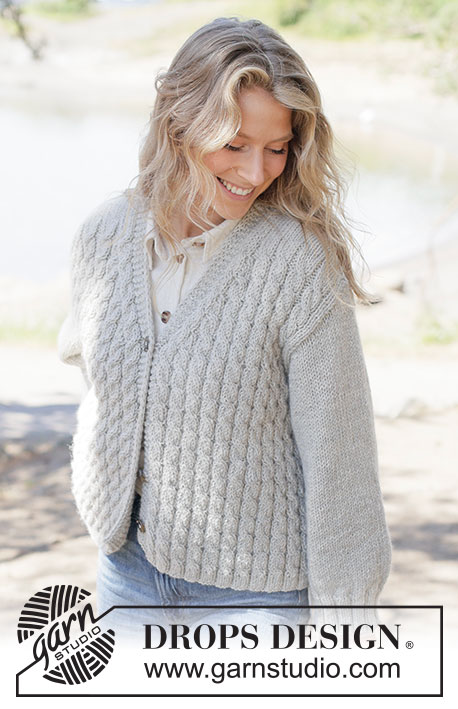 |
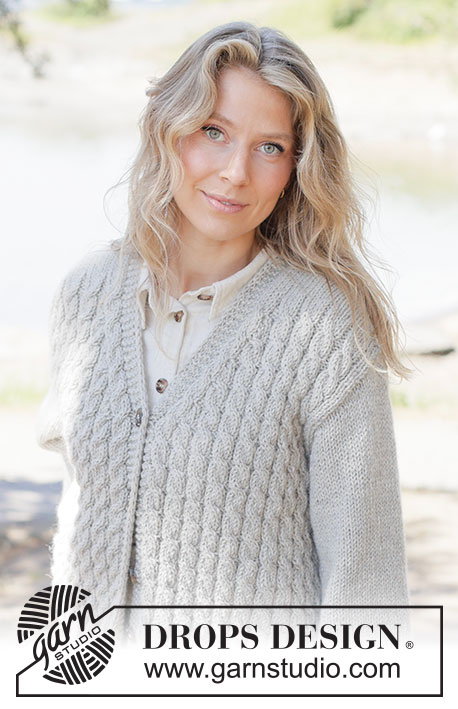 |
||||||||||||||||||
Knitted jacket in DROPS Nepal. The piece is worked bottom up with cables, V-neck and diagonal shoulders. Sizes XS - XXXL.
DROPS 263-27 |
|||||||||||||||||||
|
------------------------------------------------------- EXPLANATIONS FOR THE PATTERN: ------------------------------------------------------- GARTER STITCH (worked back and forth): Knit all rows, from both the right and wrong side. 1 ridge in height = knit 2 rows. RIGHT BAND WITH I-CORD: RIGHT SIDE: Slip 1 stitch purl-wise with yarn in front, knit 1, work 4 garter stitches. WRONG SIDE: Work 4 garter stitches, slip 1 stitch purl-wise with yarn in front, knit 1. LEFT BAND WITH I-CORD: RIGHT SIDE: Work 4 garter stitches, slip 1 stitch purl-wise with yarn in front, knit 1. WRONG SIDE: Slip 1 stitch purl-wise with yarn in front, knit 1, work 4 garter stitches. PATTERN: See diagrams A.1 to A.5. The diagrams show the pattern from the right side. The diagrams are read from right to left when working from the right side and left to right when working from the wrong side. If there are too few stitches to work a cable, work the stitches in stockinette stitch. BUTTONHOLES: Work the buttonholes on the right band from the right side (band = 6 stitches): ROW 1 (right side): Knit together the 3rd and 4th stitch from the edge, make 1 yarn over, continue the front piece as before. ROW 2 (wrong side): Work the band as before, knit the yarn over to leave a hole. The first buttonhole is worked when the piece measures 3-3-3-3-4-4-4 cm = 1⅛"-1⅛"-1⅛"-1⅛"-1½"-1½"-1½". Then work the other buttonholes when the piece measures: XS: 11, 19 and 27 cm = 4⅜", 7½" and 10⅝". S: 12, 21 and 29 cm = 4¾", 8¼" and 11⅜". M: 12, 21 and 30 cm = 4¾", 8¼" and 11¾". L: 13, 23 and 32 cm = 5⅛", 9" and 12½". XL: 14, 24 and 33 cm = 5½", 9½" and 13". XXL: 14, 24 and 34 cm = 5½", 9½" and 13⅜". XXXL: 14, 24 and 34 cm = 5½", 9½" and 13⅜". (the last buttonhole is worked just before starting to decrease for the V-neck). KNITTING TIP: When working short rows, there will be a small hole after each turn. This hole can be closed by tightening the strand or using the technique German Short Rows as follows: Slip the first stitch purl-wise, take the strand over the right needle and tighten well from the back (2 loops on the needle). These loops are worked together on the next row. DECREASE TIP: Decrease 1 stitch on each side of the marker thread as follows: Work until there are 3 stitches left before the marker thread, knit 2 together, knit 2 (marker thread sits between these 2 stitches) slip 1 stitch knit-wise, knit 1 and pass the slipped stitch over the knitted stitch (2 stitches decreased). ------------------------------------------------------- START THE PIECE HERE: ------------------------------------------------------- JACKET – SHORT OVERVIEW OF THE PIECE. The pattern uses both long and short needles; start with the length which fits the number of stitches and change when necessary. The piece is worked back and forth, bottom up as far as the armholes, then divided for the front and back pieces which are finished separately. The shoulder-stitches are bind-off while knitting together 1 stitch from the front piece and 1 stitch from the back piece. Stitches are knitted up around the armholes and the sleeves are started back and forth with short rows for the sleeve cap, then finished in the round. BODY: Cast on 192-212-232-242-262-282-312 stitches with circular needle size 4 MM = US 6 and DROPS Nepal. Work the first row as follows from the right side: Work RIGHT BAND WITH I-CORD – read explanation above, purl 1, work rib (knit 3, purl 2) until there are 10 stitches left on the row, knit 3, purl 1 and work LEFT BAND WITH I-CORD. Continue this rib for 3-3-3-3-4-4-4 cm = 1⅛"-1⅛"-1⅛"-1⅛"-1½"-1½"-1½". Change to circular needle size 5.5 MM = US 9. Work rib and bands from the wrong side, increasing 36-40-44-46-50-54-60 stitches evenly on the row (working 1 yarn over in each purled section = 4 knitted stitches from the right side) = 228-252-276-288-312-336-372 stitches. Work the next row as follows from the right side: The right band as before, work A.1 18-20-22-23-25-27-30 times in total, work A.2 18-20-22-23-25-27-30 times in total, then the left band as before. Remember the BUTTONHOLES. Continue the pattern until the piece measures 27-29-31-32-33-34-35 cm = 10⅝"-11⅜"-12¼"-12½"-13"-13⅜"-13¾". Remember to maintain the knitting gauge. Now divide for armholes. DIVIDE FOR ARMHOLES: On the next row from the right side, work the first 52-58-64-64-70-76-82 stitches as before (= band + front piece), bind off 16-16-16-22-22-22-28 stitches, work the next 92-104-116-116-128-140-152 stitches as before (= back piece), bind off 16-16-16-22-22-22-28 stitches, work the last 52-58-64-64-70-76-82 stitches as before (= front piece + band). The front and back pieces are finished separately. Do not cut the strand. Continue the left front piece as described below. LEFT FRONT PIECE: = 52-58-64-64-70-76-82 stitches. Continue the band, pattern and 2 stockinette stitches and 1 garter stitch by the armhole, working the first row from the wrong side. On the next row from the right side, begin decreasing for the V-neck inside the band and 1 cable (= A.2), AT THE SAME TIME decrease for the armhole – read both the next 2 sections before continuing. If there are too few stitches for a cable (4 stitches), work the stitches in stockinette stitch. ARMHOLE: On each row from the right side decrease 1 stitch at the beginning of the row as follows: Work 1 garter stitch, 2 stockinette stitches, purl 2 together (1 stitch decreased). Decrease like this every 2nd row 7-7-7-7-13-13-13 times (7-7-7-7-13-13-13 stitches decreased for the armhole). V-NECK: On each row from the right side decrease 1 stitch at the end of the row as follows: Work until there are 13 stitches left, purl 2 twisted together, work the cable (= A.2) and band as before. Decrease like this every 2nd row 18 times (= 18 stitches decreased for the V-neck). When all the decreases are finished, there are 27-33-39-39-39-45-51 stitches. Work until the piece measures 45-47-49-51-53-55-57 cm = 17¾"-18½"-19¼"-20"-21"-21⅝"-22½", with the last row from the wrong side. The cables are finished. Now decrease within the pattern as shown in the diagrams: ROW 1 (right side): Work A.3a, then A.3b 2-3-4-4-4-5-6 times, A.3c and the band as before. ROW 2 (wrong side): Work the band as before, knit above knit and purl above purl until there is 1 stitch left, work 1 edge stitch in garter stitch. Repeat ROWS 1 and 2 until A.3 is finished in height (9 rows worked), with the last row from the right side = 22-26-30-30-30-34-38 stitches. Now work the diagonal shoulder as follows: ROW 1 (wrong side): Work the band as before, purl until there are 3-4-5-5-5-6-7 stitches left, turn. ROW 2 (right side): Knit until there are 6 stitches left, work the band as before. ROW 3 (wrong side): Work the band as before, purl until there are 6-8-10-10-10-12-14 stitches left (i.e., 3-4-5-5-5-6-7 stitches before the previous turn), turn. ROW 4 (right side): Knit until there are 6 stitches left, work the band as before. ROW 5 (wrong side): Work the band as before, purl until there are 9-12-15-15-15-18-21 stitches left (i.e., 3-4-5-5-5-6-7 stitches before the previous turn), turn. ROW 6 (right side): Knit until there are 6 stitches left, work the band as before. Place the 15-19-23-23-23-27-31 outermost shoulder-stitches on a stitch holder. These are later bind-off with the left back shoulder-stitches. Continue the band as before + 1 edge stitch in garter stitch across the remaining 7 stitches, for 8 cm = 3⅛". Bind off. RIGHT FRONT PIECE: = 52-58-64-64-70-76-82 stitches. Continue the band and pattern, with 2 stockinette stitches and 1 garter stitch by the armhole and with the first row from the wrong side. On the next row from the right side begin to decrease for the V-neck inside the band and 1 cable (= A.1), AT THE SAME TIME decrease for the armhole – read both the next 2 sections before continuing. If there are too few stitches for a cable (4 stitches), work the stitches in stockinette stitch. V-NECK: On each row from the right side decrease 1 stitch at the beginning of the row as follows: Work 6 band-stitches and 5 pattern-stitches as before, purl 2 together (1 stitch decreased). Decrease like this every 2nd row 18 times (= 18 stitches decreased for the V-neck). ARMHOLE: On each row from the right side decrease 1 stitch at the end of the row as follows: Work until there are 5 stitches left, purl 2 twisted together (1 stitch decreased), work 2 stockinette stitches and 1 garter stitch. Decrease like this every 2nd row 7-7-7-7-13-13-13 times (7-7-7-7-13-13-13 stitches decreased for the armhole). When all the decreases are finished, there are 27-33-39-39-39-45-51 stitches. Work until the piece measures 45-47-49-51-53-55-57 cm = 17¾"-18½"-19¼"-20"-21"-21⅝"-22½", with the last row from the wrong side. The cables are finished and you now decrease within the pattern as shown in the diagrams: ROW 1 (right side): Work the band as before, A.4a, then A.4b 2-3-4-4-4-5-6 times, A.4c. ROW 2 (wrong side): Work 1 edge stitch in garter stitch, knit above knit and purl above purl until there are 6 stitches left, work the band as before,. Repeat ROWS 1 and 2 until A.4 is finished in height (8 rows worked), with the last row from the wrong side = 22-26-30-30-30-34-38 stitches. Now work the diagonal shoulder as follows: ROW 1 (right side): Work the band as before, knit until there are 3-4-5-5-5-6-7 stitches left, turn. ROW 2 (wrong side): Purl until there are 6 stitches left, work the band as before. ROW 3 (right side): Work the band as before, knit until there are 6-8-10-10-10-12-14 stitches left (i.e., 3-4-5-5-5-6-7 stitches before the previous turn), turn. ROW 4 (wrong side): Purl until there are 6 stitches left, work the band as before. ROW 5 (right side): Work the band as before, knit until there are 9-12-15-15-15-18-21 stitches left (i.e., 3-4-5-5-5-6-7 stitches before the previous turn), turn. ROW 6 (wrong side): Purl until there are 6 stitches left, work the band as before. Place the 15-19-23-23-23-27-31 outermost shoulder-stitches on a stitch holder. These are later bind-off together with the right back shoulder-stitches. Continue the band as before + 1 edge stitch in garter stitch across the remaining 7 stitches for 8 cm = 3⅛". Bind off. BACK PIECE: = 92-104-116-116-128-140-152 stitches. The pattern is continued with 1 edge stitch in garter stitch and 2 stockinette stitches on each side (and 14-16-18-18-20-22-24 cables), decreasing for the armholes on each row from the right side as follows (if there are too few stitches for a cable (4 stitches), work the stitches in stockinette stitch): Work 1 edge stitch in garter stitch, 2 stockinette stitches, purl 2 together, continue the pattern until there are 5 stitches left, purl 2 twisted together, 2 stockinette stitches and 1 edge stitch in garter stitch. Decrease like this every 2nd row a total of 7-7-7-7-13-13-13 times = 78-90-102-102-102-114-126 stitches (12-14-16-16-16-18-20 cables). Continue working until the piece measures 45-47-49-51-53-55-57 cm = 17¾"-18½"-19¼"-20"-21"-21⅝"-22½", with the last row from the wrong side. The cables are finished and you now decrease within the pattern as shown in the diagrams: ROW 1 (right side): Work A.5a, A.5b 11-13-15-15-15-17-19 times, A.5c. ROW 2 (wrong side): Knit above knit and purl above purl with 1 edge-stitch in garter stitch on each side. Work ROWS 1 and 2 until A.5 is finished in height (8 rows worked) and the last row is from the wrong side = 54-62-70-70-70-78-86 stitches. On the next row, bind off stitches for the neckline as follows: Knit 16-20-24-24-24-28-32 (= right shoulder), bind off 22 stitches in all sizes, knit 16-20-24-24-24-28-32 (= left shoulder). Continue the left diagonal shoulder as described below. LEFT SHOULDER: ROW 1 (wrong side): Purl. ROW 2 (right side): Bind off the first stitch (= 15-19-23-23-23-27-31 shoulder-stitches), knit until there are 3-4-5-5-5-6-7 stitches left, turn. ROW 3 (wrong side): Purl. ROW 4 (right side): Knit until there are 6-8-10-10-10-12-14 stitches left (i.e., 3-4-5-5-5-6-7 stitches before the previous turn), turn. ROW 5 (wrong side): Purl. ROW 6 (right side): Knit until there are 9-12-15-15-15-18-21 stitches left (i.e., 3-4-5-5-5-6-7 stitches before the previous turn), turn. ROW 7 (wrong side): Purl. The remaining 15-19-23-23-23-27-31 shoulder-stitches are now bind off together with the 15-19-23-23-23-27-31 shoulder-stitches on the left front piece. Hold the needles together with back piece towards you and bind off as follows: Purl together 1 stitch from the left front shoulder and 1 stitch from the left back shoulder, * purl together 1 stitch from the left front shoulder and 1 stitch from the left back shoulder, pass the first stitch over the last stitch *, work from *-* until all stitches have been bind off. Work the right diagonal shoulder. RIGHT SHOULDER: ROW 1 (wrong side): Bind off the first stitch (= 15-19-23-23-23-27-31 shoulder-stitches), purl until there are 3-4-5-5-5-6-7 stitches left, turn. ROW 2 (right side): Knit. ROW 3 (wrong side): Purl until there are 6-8-10-10-10-12-14 stitches left (i.e., 3-4-5-5-5-6-7 stitches before the previous turn), turn.. ROW 4 (right side): Knit ROW 5 (wrong side): Purl until there are 9-12-15-15-15-18-21 stitches left (i.e., 3-4-5-5-5-6-7 stitches before the previous turn), turn. ROW 6 (right side): Knit The remaining 15-19-23-23-23-27-31 shoulder-stitches are now bind off together with the 15-19-23-23-23-27-31 shoulder-stitches on the right front piece. Hold the needles together with front piece towards you and bind off as follows: Knit together 1 stitch from the right front shoulder and 1 stitch from the right back shoulder, * knit together 1 stitch from the right front shoulder and 1 stitch from the right back shoulder, pass the first stitch over the last stitch *, work from *-* until all stitches have been bind off. SLEEVES: The sleeves are worked top down. Lay the piece flat and insert 1 marker at the top of the armhole. Using circular needle size 4 MM = US 6. Start in the middle of the bind-off stitches under the sleeve and knit up 66-66-66-70-74-78-82 stitches inside the 1 edge stitch, making sure you have equal numbers of stitches on each side of the marker. Change to circular needle size 5.5 MM = US 9. Work stockinette stitch back and forth with short rows for the sleeve cap (to give the sleeve a better fit), starting mid-under the sleeve as follows: ROW 1 (right side): Knit to 4 stitches past the shoulder-marker, turn – read KNITTING TIP. ROW 2 (wrong side): Purl to 4 stitches past the shoulder-marker, turn. ROW 3 (right side): Knit to 2 stitches past the previous turn, turn. ROW 4 (wrong side): Purl to 2 stitches past the previous turn, turn. Repeat ROWS 3 and 4 until you have turned a total of 22-22-22-22-24-24-24 times (11-11-11-11-12-12-12 times on each side, with the last row from the wrong side). AFTER THE FINAL TURN: After working row 4 for the last time, turn and knit to the beginning of the round (mid-under the sleeve). Insert a marker-thread mid-under the sleeve, this is used when decreasing under the sleeve. Allow the thread to follow your work onwards. Work stockinette stitch in the round. AT THE SAME TIME, when the sleeve measures 1 cm = ⅜" under the sleeve (read DECREASE TIP), decrease 2 stitches every 5½-7-8½-5½-4½-3½-3 cm = 2⅛"-2¾"-3¼"-2⅛"-1⅝"-1¼"-1⅛" a total of 7-6-5-7-8-9-11 times = 52-54-56-56-58-60-60 stitches. Continue working until the sleeve measures approx. 49-49-47-48-48-46-45 cm = 19¼"-19¼"-18½"-19"-19"-18"-17¾" from mid-top of shoulder (38-38-36-37-36-34-33 cm = 15"-15"-14¼"-14½"-14¼"-13⅜"-13" mid-under the sleeve). Change to double pointed needles size 4 MM = US 6. Work rib (knit 3, purl 2), AT THE SAME TIME increase 8-6-9-9-7-10-10 stitches evenly on the first round = 60-60-65-65-65-70-70 stitches. When the rib measures 6-6-6-6-7-7-7 cm = 2⅜"-2⅜"-2⅜"-2⅜"-2¾"-2¾"-2¾", bind off with rib. The sleeve measures approx. 55-55-53-54-55-53-52 cm = 21⅝"-21⅝"-21"-21¼"-21⅝"-21"-20½" from mid-top of shoulder. ASSEMBLY: Sew the 2 bands together mid-back, then sew the bands to the neckline. Sew the buttons onto the left band. |
|||||||||||||||||||
Diagram explanations |
|||||||||||||||||||
|
|||||||||||||||||||
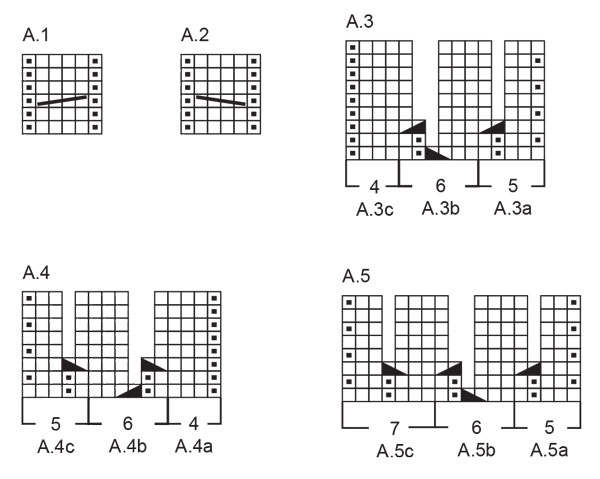 |
|||||||||||||||||||
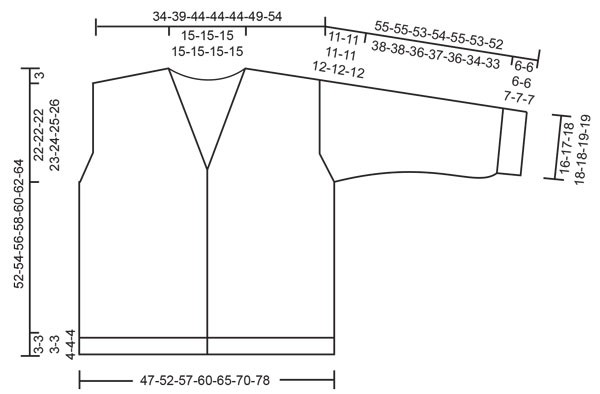 |
|||||||||||||||||||
Have you finished this pattern?Tag your pictures with #dropspattern #softspirecardigan or submit them to the #dropsfan gallery. Do you need help with this pattern?You'll find 33 tutorial videos, a Comments/Questions area and more by visiting the pattern on garnstudio.com. © 1982-2025 DROPS Design A/S. We reserve all rights. This document, including all its sub-sections, has copyrights. Read more about what you can do with our patterns at the bottom of each pattern on our site. |
|||||||||||||||||||

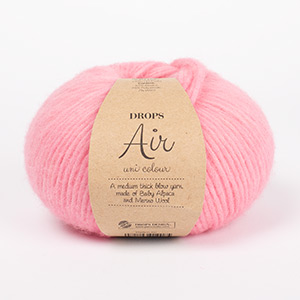





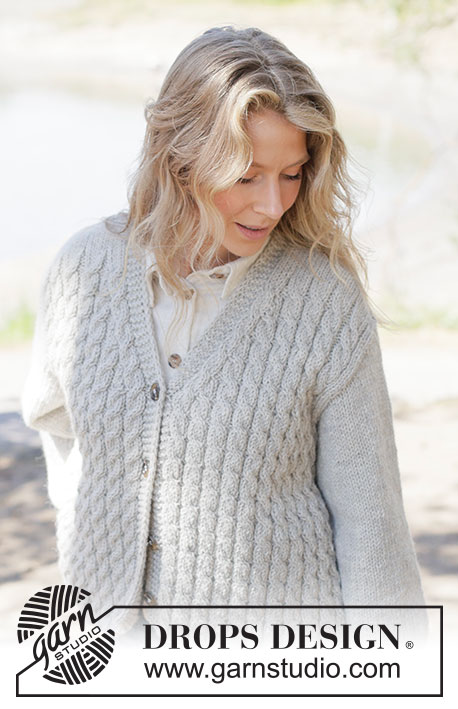
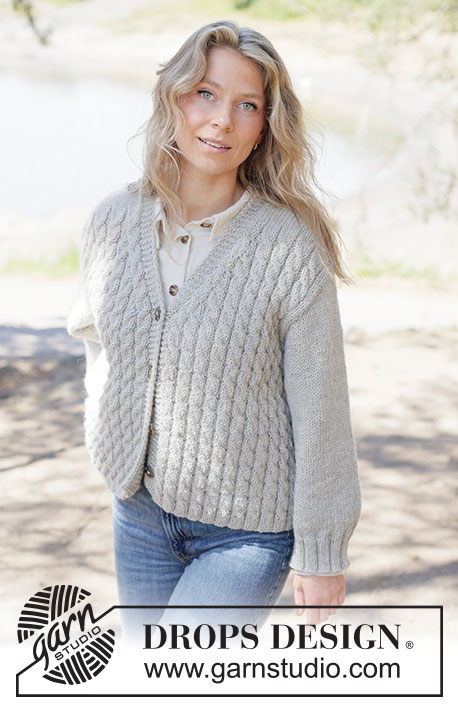
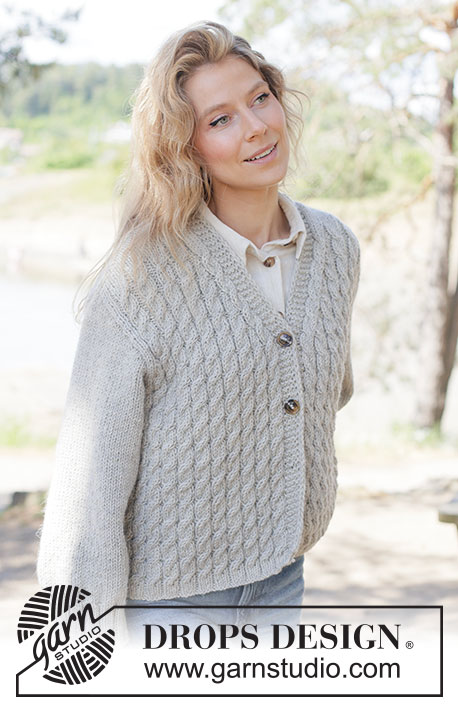
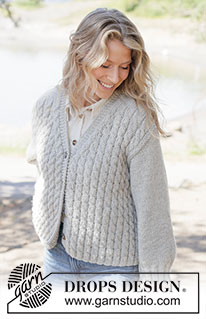
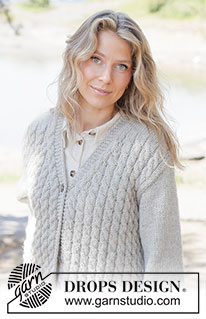
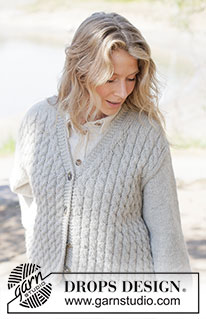
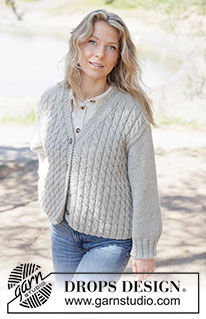
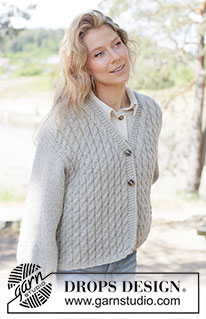
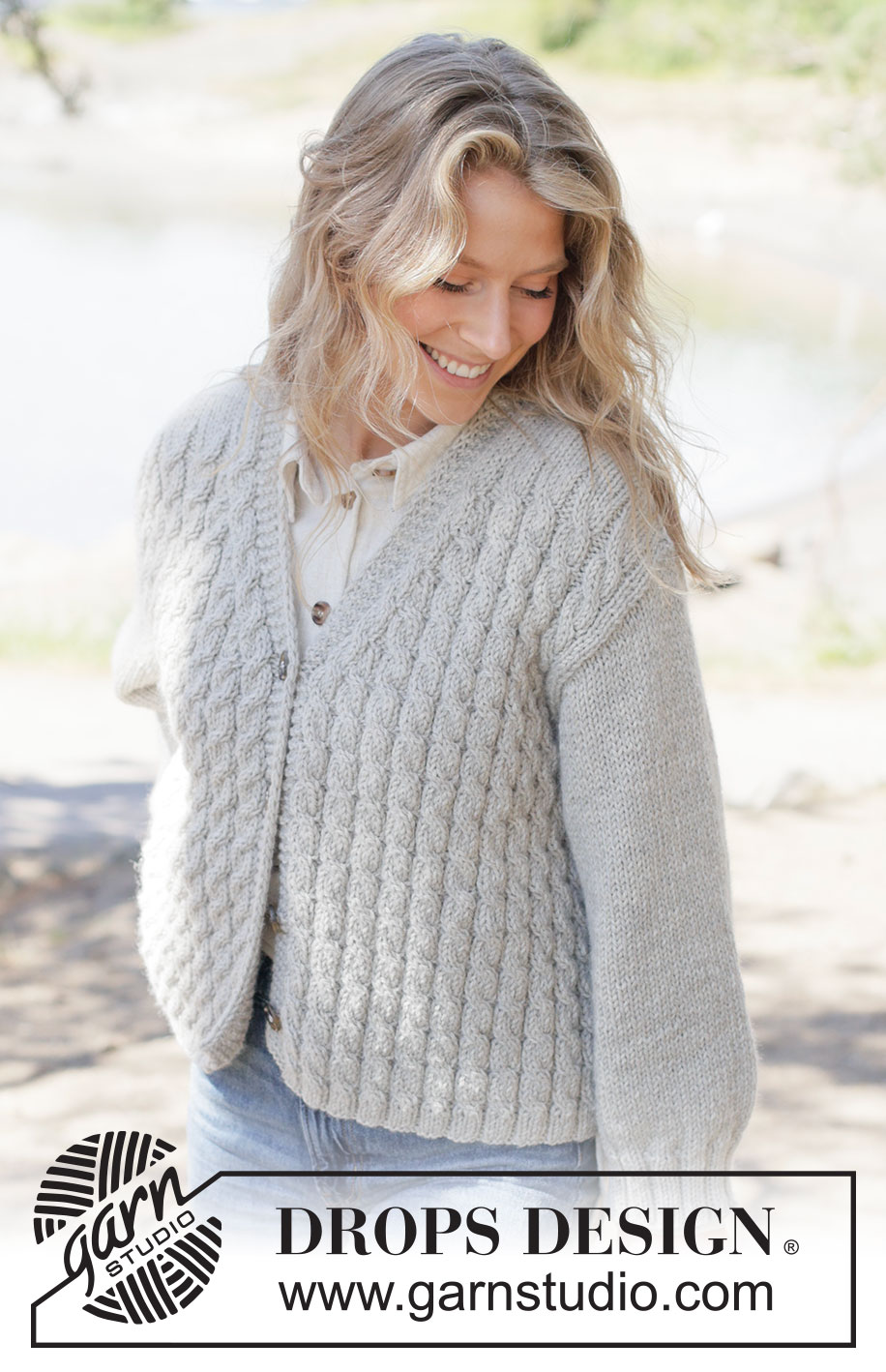
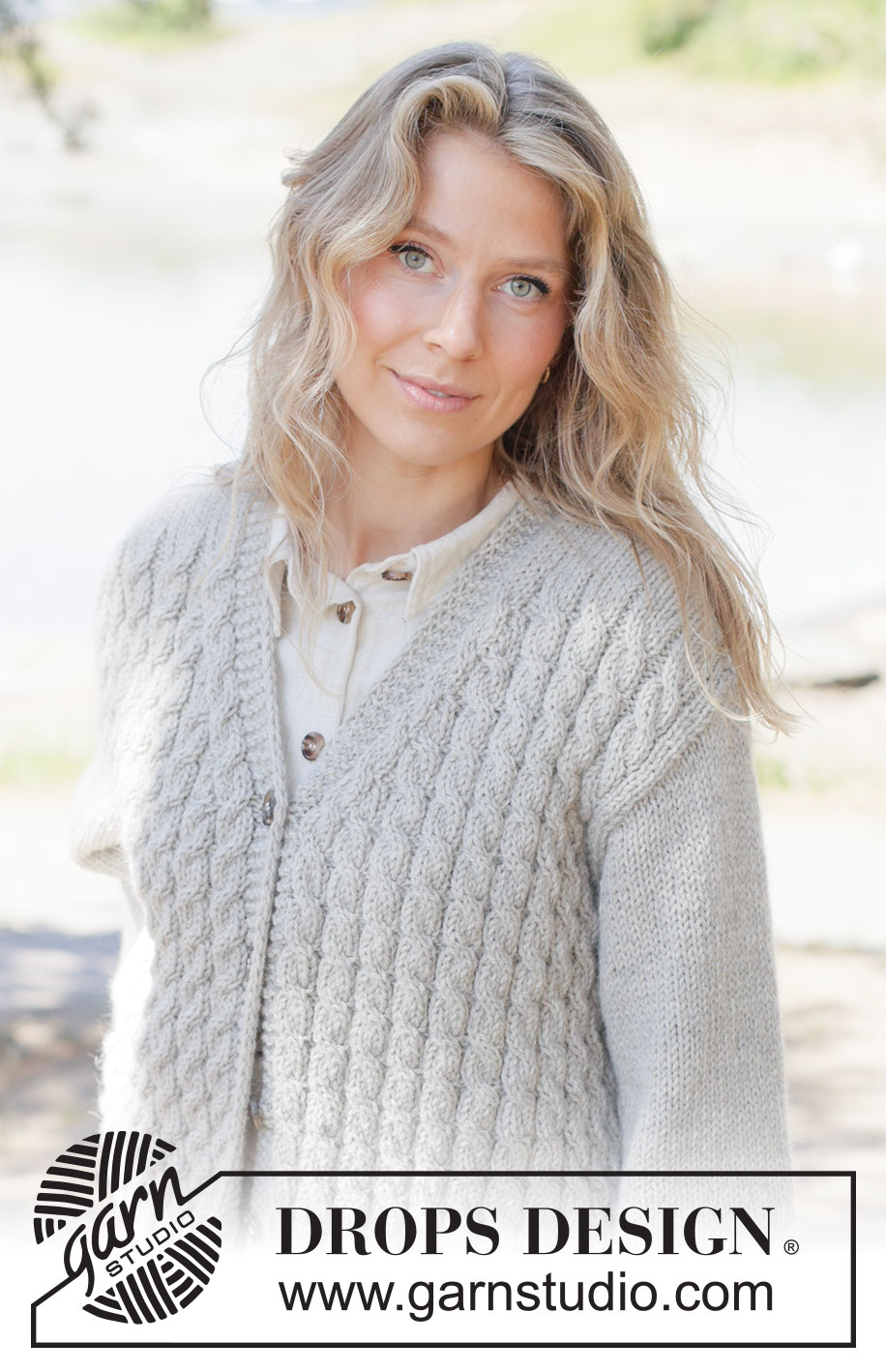
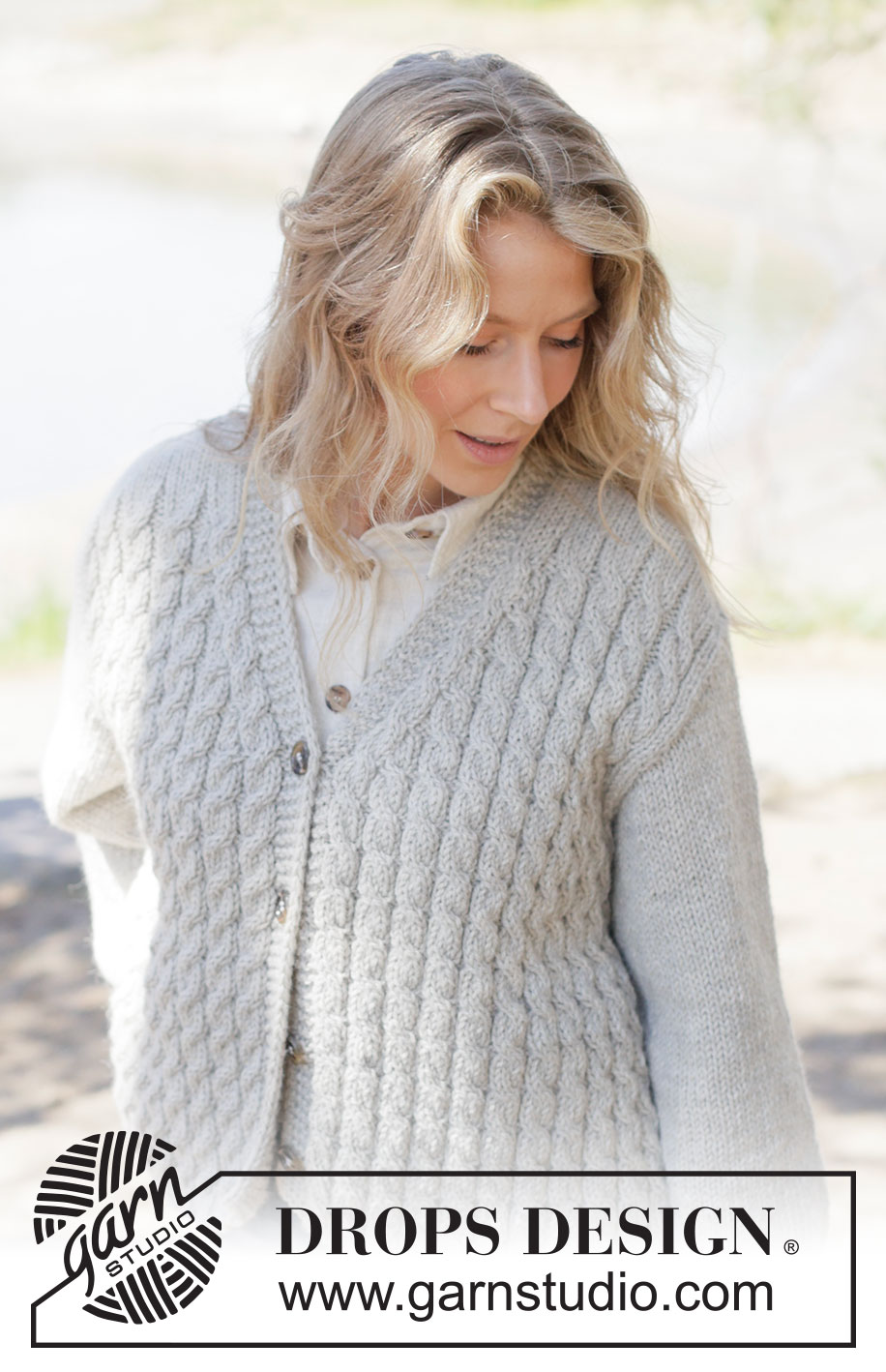
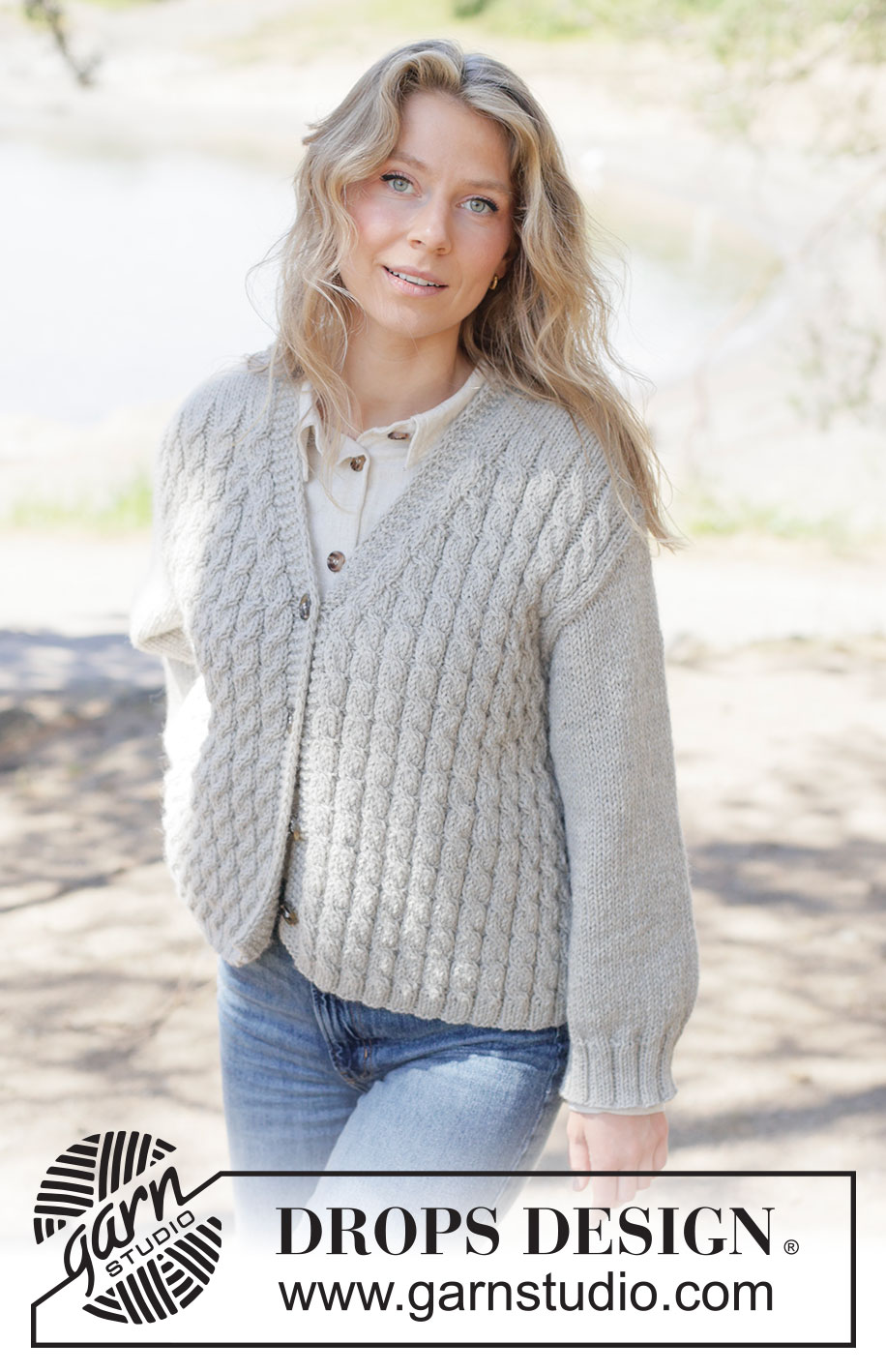
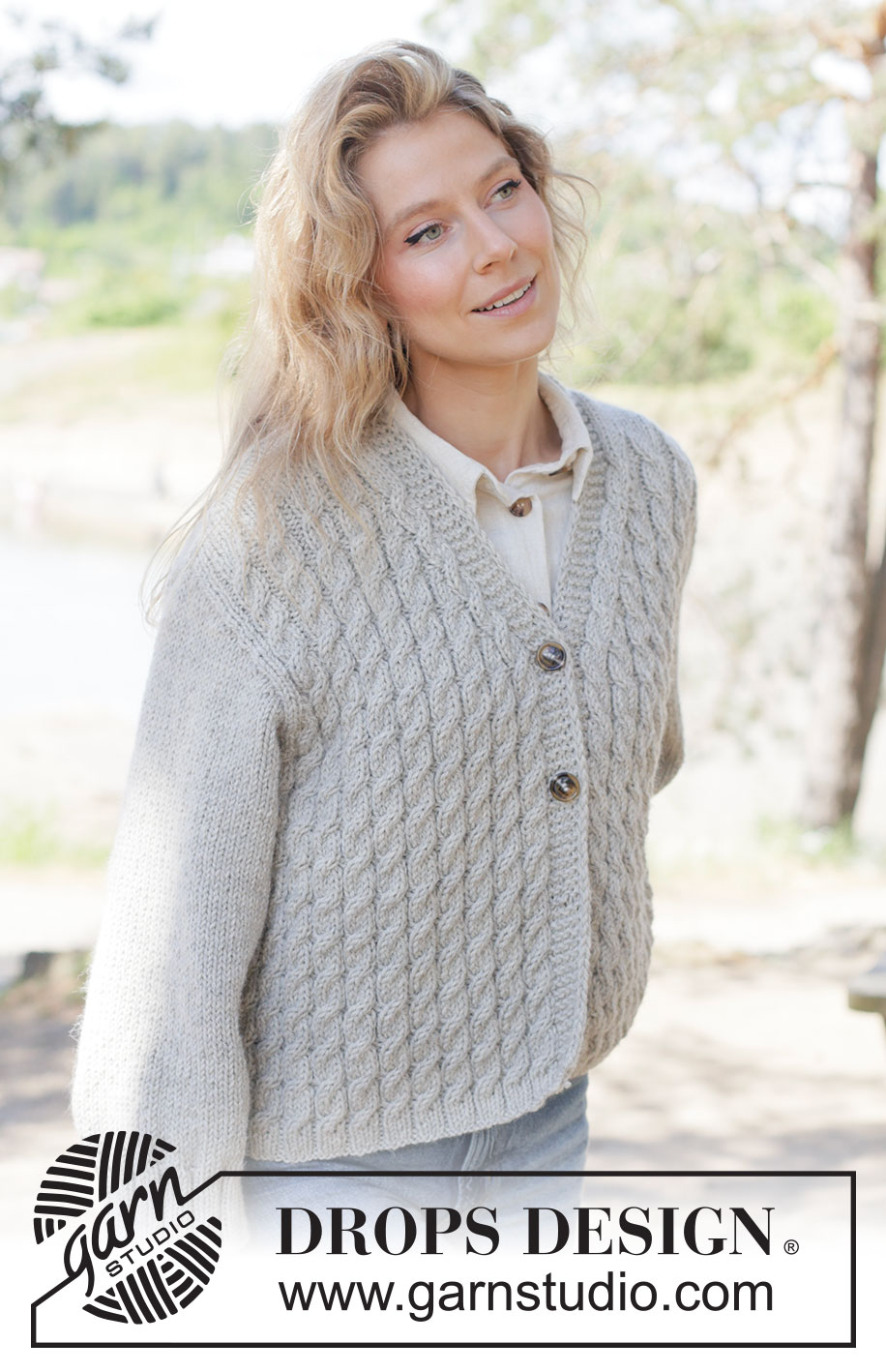
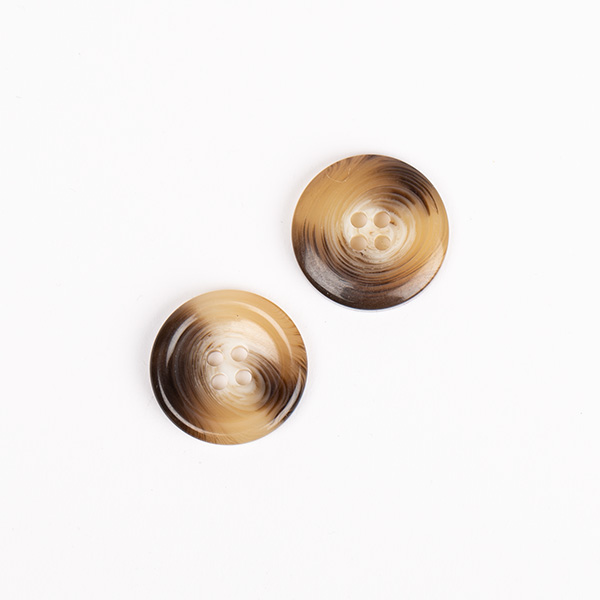
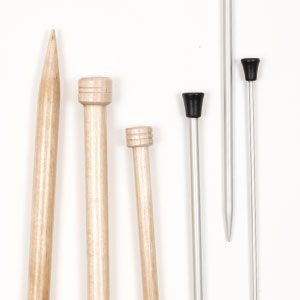
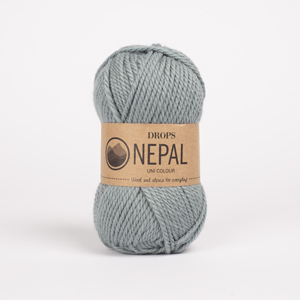
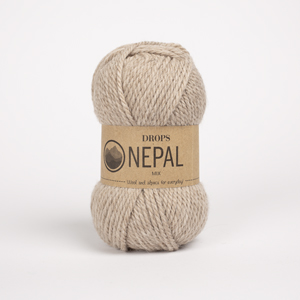



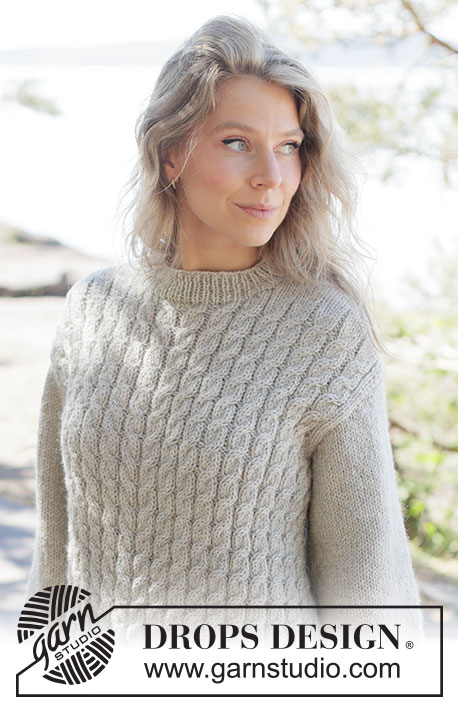







































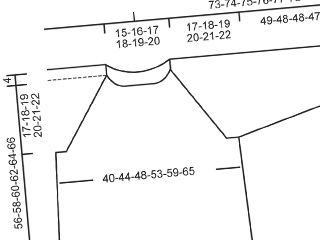
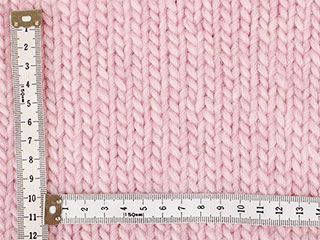
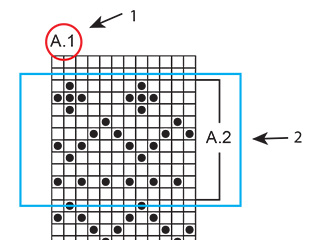
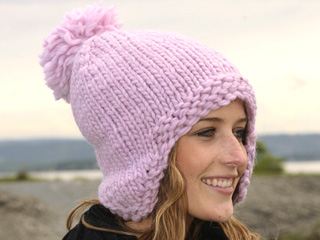
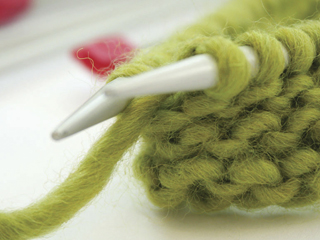
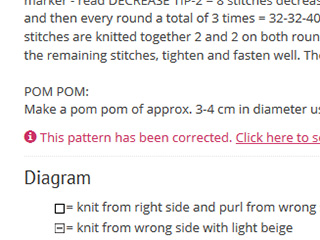
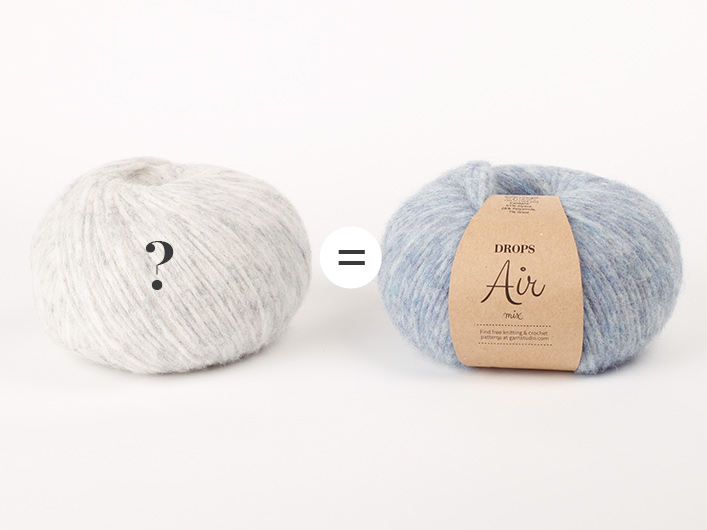
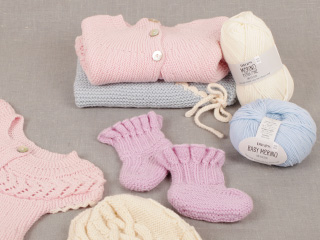
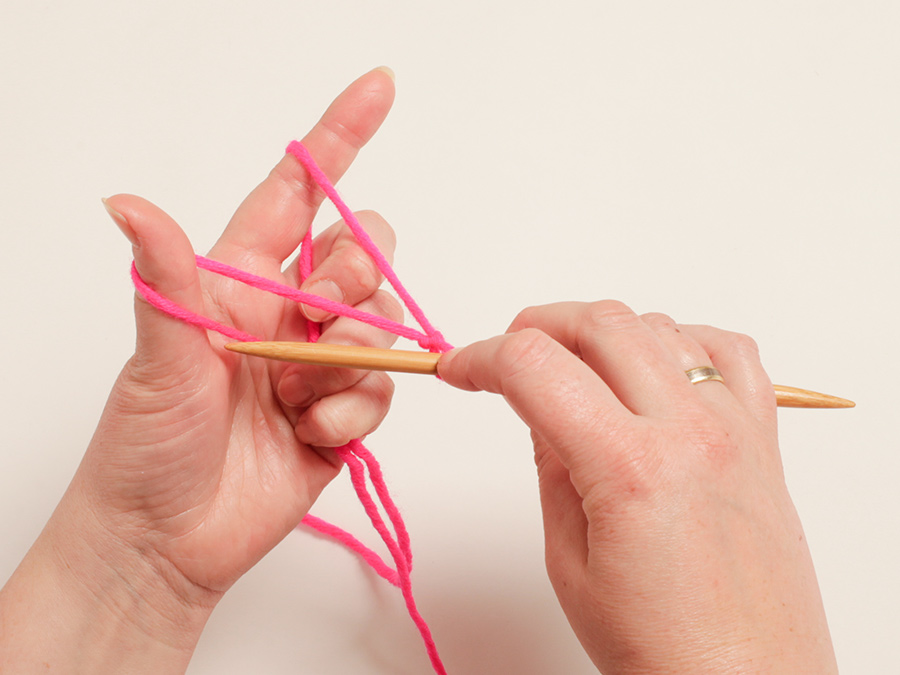
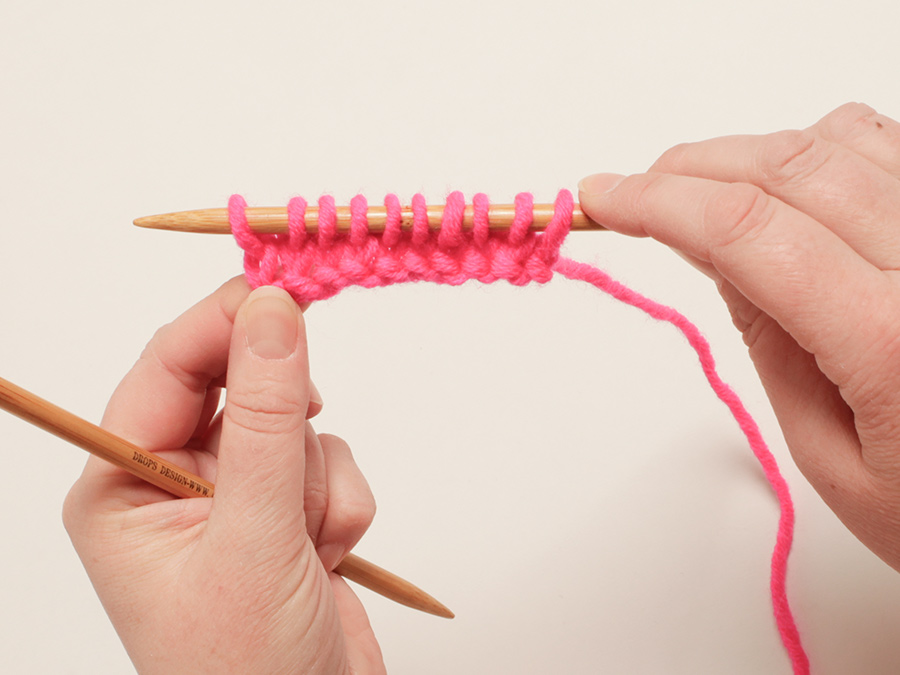
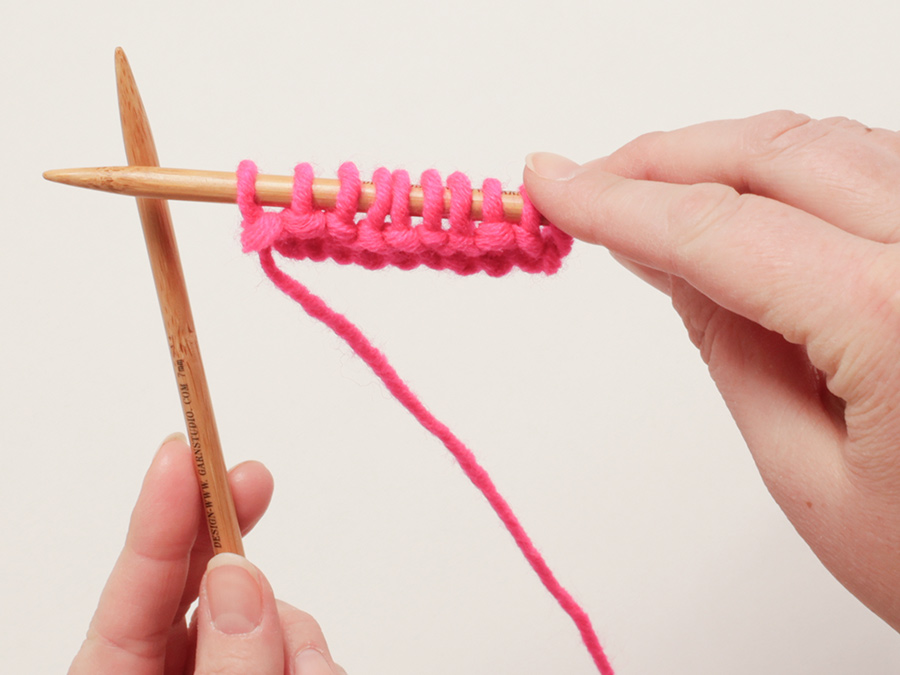
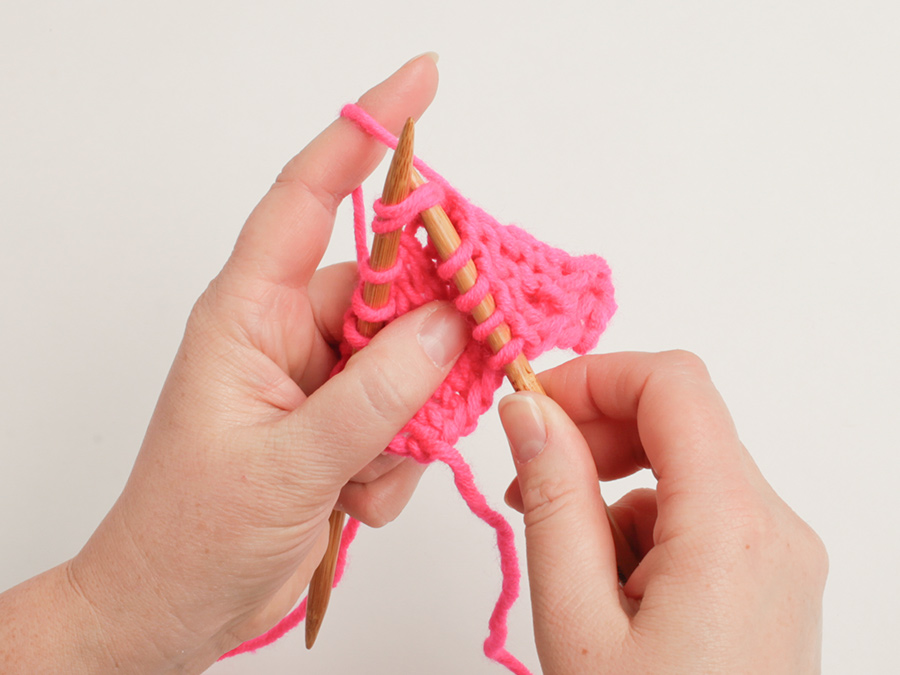
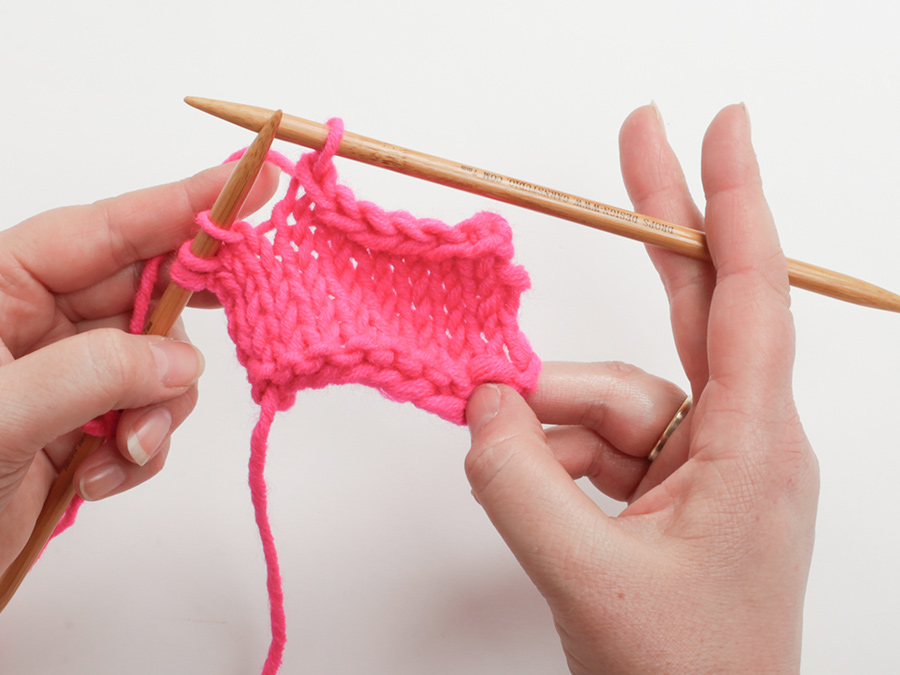
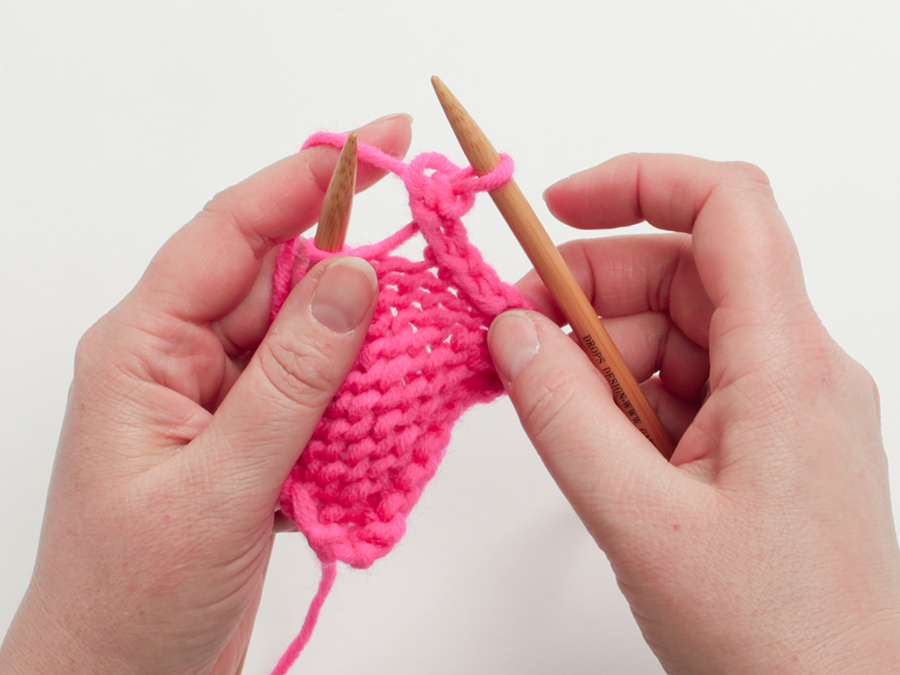
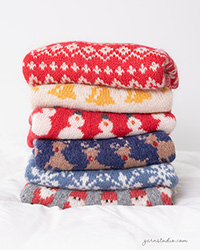
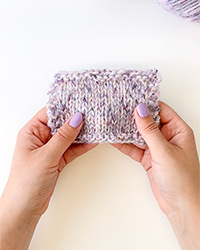

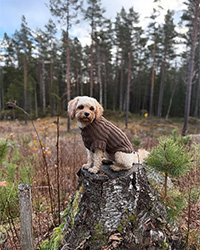
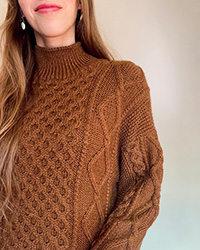
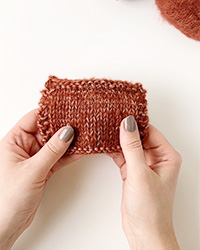
Post a comment to pattern DROPS 263-27
We would love to hear what you have to say about this pattern!
If you want to leave a question, please make sure you select the correct category in the form below, to speed up the answering process. Required fields are marked *.